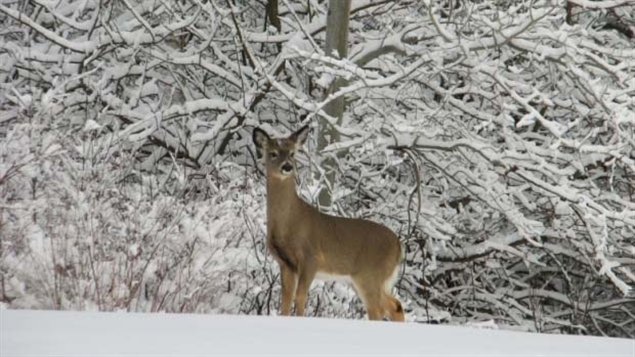Its been an unusually long and extremely cold winter across much of Canada.
In the northwestern area of the province of Ontario, there has been the feeling that the deer population was growing too large in the past few years.
Now however, a former Ministry of Natural Resources biologist thinks the population will be very hard hit by this year’s cold and snow.
Bruce Ranta says, “There’s going to be substantial mortality”.
He says adult bucks and young deer will be hardest hit. The males, as they are weakened going into the winter from the rigours of the rut, while the fawns struggle as well in the deep snow which makes them expend lots of energy. As they are weakened, they become easier targets for wolves and other predators.
Recently in Timmins, police shot two lynx in separate incidents. Normally very elusive, biologists say they came close to the city seeking food because they were hungry from the long winter.

“They’re out of steam, they’re emaciated,” Toronto Wildlife Centre
The winter has also taken a toll on waterfowl both in cities and all around the Great Lakes.
In the major urban centre of Toronto, Ontario, Animal Services officers say calls about dead birds are up by 66 percent.
Many of the birds migrate to southern parts of the country from further north, while many other ducks, geese, and swans have learned to adapt to the city and its generally milder and shorter winters, and live there all year.
Nathalie Karvonen, executive director of the Toronto Wildlife Centre, a charity that helps care for area birds, says “They’re out of steam, they’re emaciated, they really have no reserves to fight these temperatures or to really fight to find food.”
Wednesday and Thursday yet another cold front with strong winds and snow whipped through central and eastern Canada, with more snow predicted to come today in northern and central regions of Ontario and Quebec.







For reasons beyond our control, and for an undetermined period of time, our comment section is now closed. However, our social networks remain open to your contributions.